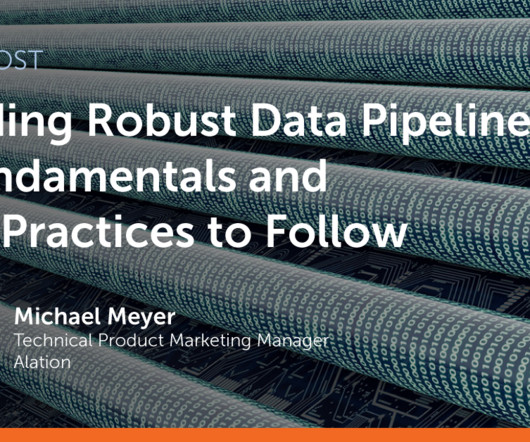Building Robust Data Pipelines: 9 Fundamentals and Best Practices to Follow
Alation
MAY 16, 2023
Machine Learning Data pipelines feed all the necessary data into machine learning algorithms, thereby making this branch of Artificial Intelligence (AI) possible. Data Quality When using a data pipeline, data consistency, quality, and reliability are often greatly improved.














Let's personalize your content